On our second day fishing out of the east end of Roatan, our guide, Michael Boden, pointed the nose of his plus-sized panga into the west wind and toward the open ocean. As the sun made its morning appearance over the Caribbean, Earl and I could see what awaited us. Moments later, as Michael guided the boat out of the protected waters of the bight and into the waves, we were in it. The first giant roller looked like it was 20 feet over our heads, and I’m not ashamed to admit that, even this close to the shallows, a spear of terror shot through my heart.
At the bottom of the swell, Michael gunned the 115-horsepower outboard to life, and the panga, a sturdy, time-tested craft, climbed the swell like a dune buggy plugging over a mountain of sand. Once atop the roller, the boat laid down nicely, but another wave was coming – this one taller and more imposing. Again, Michael goosed the motor, and up the panga went. I was certain the roller would break and come right down atop the nose of the craft, dooming us all to the fates of the blue water. Here we come, Davy Jones. Open the locker. I inhaled sharply and grabbed the gunwale of the craft, knowing for certain that in moments I’d be swimming.
“Jesus Christ,” I said aloud. Next to me, Early scoffed, as if this was nothing.
“Don’t be such a …” Then, he saw what I saw, and did a quick recalculation in his head. “Oh, my God,” he said, as the wave started to break and the nose of the boat dipped just a hair.
An audible and collective inhale could be heard, and there might have been a slight giggle from Michael, who sat behind us in the stern of the boat, manning the wheel.
Another roar from the modest outboard lifted us to the top of the wave, and the boat started its descent into another watery canyon. And it went on like that for a good 15 minutes. Earl and I sat in the center of the boat, good and puckered. Michael, as if he’d done this a hundred times – and I suspect he had – just kept pointing the nose of the buoyant craft into the face of the waves, daring one of them to try and swamp us.
Finally, after getting us back “inside,” to more placid waters, I looked at Earl. He looked back, with a grin on his face.
“That was fun,” he said. “It’s like a rollercoaster ride.”
Yeah. Now that we had survived, it was fun.
You’ve got to love a panga.

Murky origin
If you’ve fished from a boat just about anywhere south of Brownsville, Texas, or San Diego, Calif., you’ve likely fished from a panga. Generally associated with Mexican fishermen from the Sea of Cortez to the southern Yucatan, the panga is the boat of choice for most of Central America. Its delta-shaped hull, bomb-proof fiberglass construction and minimalist design make it an easy option for both utilitarian fishermen and for guides who transport clients from flat to flat or from reef to reef.
While nothing’s unsinkable, the panga just might be as close to it as any other craft on the sea. The boat, according to some, gets its name from its upswept hull — it looks like a long knife, called a panga (or a machete), that’s used to clear brush. Others say the boat gets its name from the panga fish, which is often netted from boats in southern tropical seas around the globe. While the boat version of the panga doesn’t slice through anything (nor does it look much like the fish with the same name), it does relentlessly float, unflappable even among the gnarliest of blue-water gales.
But the actual origin of the panga is very much debatable.
Mac Shroyer, who owned a seaside marina in La Paz on the Mexican Baja, is often credited for the official design of the boat — he drew up the plans for the craft in 1968, and is credited for building the first fiberglass panga sometime in 1969 or 1970. But from there, things get a little muddy.
To many, the panga is the product of a World Bank-funded project that Japanese company Yamaha engineered and built in the 1970s to make fishing boats both durable and affordable to oceanside communities in Mexico where fishing provided the bulk of the local diet. For Yamaha, the project was a cash cow, but not so much due to the sales of its boats. Rather, the company constructed thousands of pangas that were outfitted to hold much more valuable Yamaha motors.
Shroyer told Boating Magazine in 2012 “we did it here first,” referencing his design crafted in La Paz.
“Their project worked fairly well, but the Japanese version had a big, bulky gunwale and foam for flotation,” Shroyer said. “Most of the boats ended up on the east coast of Mexico.”
Yamaha’s boats soon found their way to coastal fishing communities around the globe – in southeast Asia, the boats are still called “Yamahas” today.
The idea, of course, was to craft a durable boat that could handle both shallow and deep water and be launched from a sandy beach, if necessary. Today, pangas are found in tropical climes the world over, from the coasts of Africa to the beaches of Oceania and all throughout the Americas.
Over the years, I’ve spent many an hour in pangas, both as transport to fishing flats and as skinny water flats skiffs where I’ve cast from the bow to everything from permit and bonefish to tarpon and sierra mackerel. True to Shroyer’s intent, the panga is among the most versatile boats ever built.

The Cadillac of the tropics
You often hear, depending on the context, that this craft or that plane is the “Cadillac” of its class. The venerable DeHavilland Beaver is often called the Cadillac of the North, while the ubiquitous “junk” of southern Asia might be described as the Cadillac of the river.
But in the warmer climates along both coasts of the Americas, there’s no question that the panga is the Cadillac of the tropics. Its minimalist design gives the buoyant craft an impressive payload, and, built without add-ons or extras, the panga is virtually indestructible.
While it might not be the prettiest of boats, I liken it to the common carp. It’s not the most handsome craft, but it performs its tasks just about anywhere it's launched into the sea. And, after a fashion, even the most casual angler who’s cast from a panga can adjust his or her perspective and see the beauty in its simplicity.
There’s appeal there, knowing that the boat can handle just about anything its driver might throw at it.
Home safe
Try as it might, the Caribbean off the eastern edge of Roatan couldn’t stop Michael’s panga, and after a day spent casting to permit and bonefish, he surfed the waves back to the little channel where our homey villa awaited.
I took a quick look at the next day’s weather — more of the same. Winds to 25 mph and a notable “small-craft advisory.” But I knew it wouldn’t stop Michael or his panga from pushing over the rollers and delivering us to the permit flat.
What we do to get to fish never ceases to amaze me. And, frankly, I’m equally amazed by the little boat that helps us carry out our silly quests.
Rough seas? Gale-force wind? Angry rollers that conjure up a pirate’s tragedy?
Give me a panga. Give me the Cadillac of the tropics.




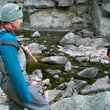
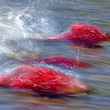
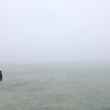




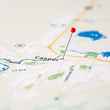




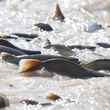
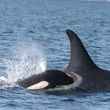



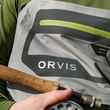
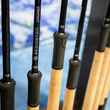



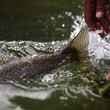
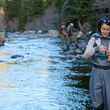

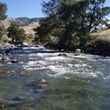
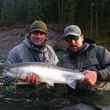
Comments
Kerry replied on Permalink
Great piece! I always took them for granted. Shame on me.
edward michaels replied on Permalink
If you wanna go fast get a technical skiff, but if you wanna go home, get a panga!
Pages